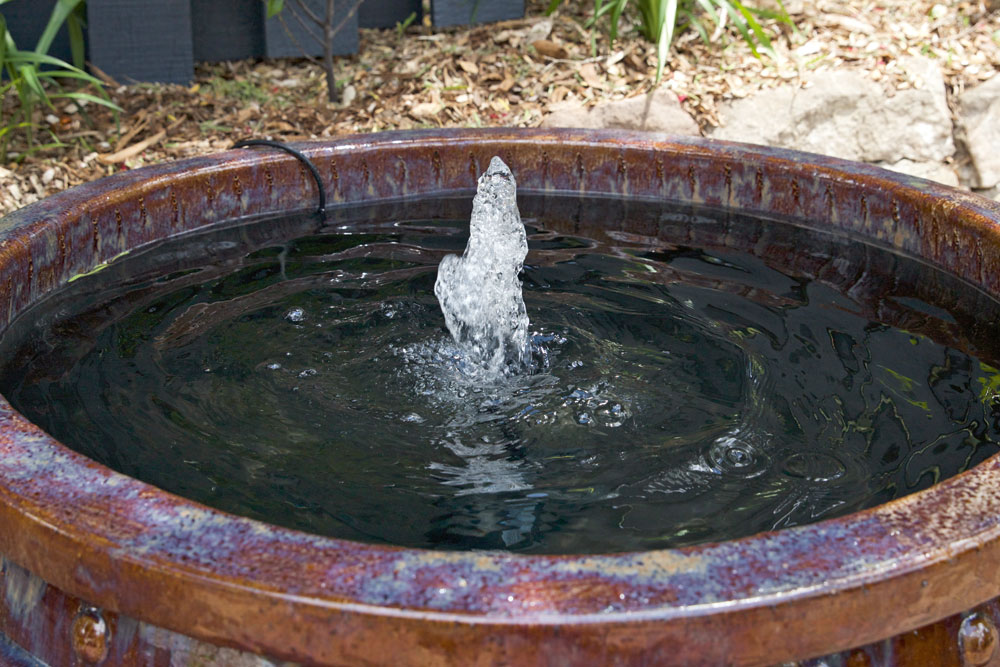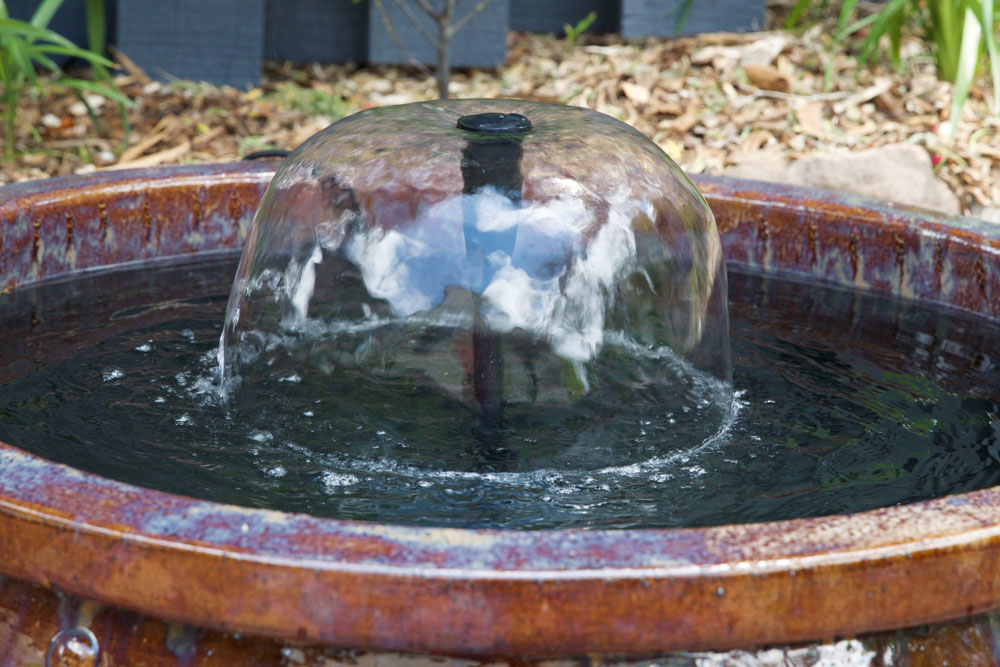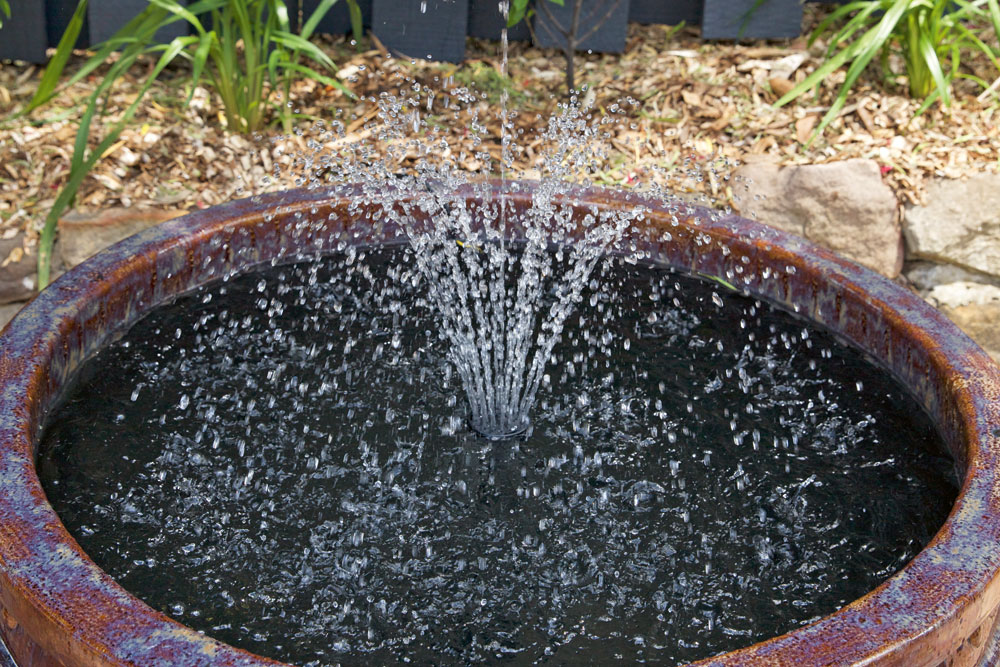Pond In A Pot

Water features are on the garden wishlist for most homes, but what do you do when you only have a small space or you need something portable?
The simple answer is to turn a pot into a pond. Using readily available supplies, you can convert virtually any pot or container into a fabulous mini fountain.
The greatest advantage of this type of water feature is that you can match the look of it to any style of landscape just by selecting a pot that suits.
You’ll find the hardest part of this project is waiting for the paint to dry.
All you need is a pot, pump, sealant and waterproof putty, then simply seal the pot, fill it with water, add the pump and switch it on.
We created a unique fountainhead by adapting an old sandstone grinding wheel and added a pond light for extra atmosphere at night-time.
Select the pump
When it comes to pumps, the key is to get one that can push an appropriate volume of water to the required height.
This is expressed as the volume flow rate at the height of the output above the water level of the pond.
The volume of water flowing decreases with the height of the output. Check the pump packaging, as it should have a graph showing
the pressure drop-off with height, to help you to select the right pump.
Position the pump in the pot and decide on the fitting needed for the output or fountainhead. It comes with a variety of fittings, but extra riser pipe may be required for a deep pot.
You can decide on the output or fountainhead after the pot has been filled, allowing you to compare the different styles.
Instead of choosing a pump that will run flat out to meet demand, opt for one with a slightly higher capacity than needed, adding an in-line tap to adjust the flow rate.

Plain riser

Contemporary water bell

Traditional sprinkler
Checking the weight
Where you locate your finished pond requires careful consideration, not only in terms of aesthetics but also due to its overall weight.
To work this out, add together the weight of the pot, pump and water, plus any extras such as a waterspout.
One litre of water weighs 1kg and there are 1000L in a cubic metre. Work out the volume by multiplying depth by height by width, taking 15-20% off the total if the pot is very curved.
Convert the cubic volume to litres. So if the volume is 0.125m³ that equates to 125L or 125kg.
Don’t position a filled pot that weighs more than 100kg on the outside edge of any cantilevered balcony or on a timber deck unless it’s directly above a bearer and a pier or post.
Preparing the pot
Thoroughly clean the interior of the pot, following the surface preparation instructions on the tin of waterproofing paint, then seal any drainage holes with putty.





